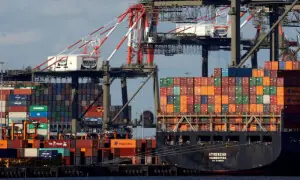Pakistan’s debt stock increases 10% to Rs42tr in eight months
The federal government’s total debt (domestic and external) stocks rose by 10 percent during the first eight months of this fiscal year.
According to the State Bank of Pakistan (SBP), the central government’s domestic and external debt stocks surged to Rs 42.762 trillion at the end of February 2022 compared to Rs 38.7 trillion in June 2021, depicting an increase of Rs 4.623 trillion.
Economists said that the country’s debt burden is increasing because of massive and continued borrowing from domestic and external resources for financing the fiscal deficit and external deficit.
During the period under review, the major increase was recorded in the external debt, which rose by 21 percent or Rs 2.622 trillion. The federal government’s external debt stood at Rs 15.056 trillion in February 2022 up from Rs 12.434 trillion in June 2021. External debt included Rs 14.783 trillion of long-term debt and Rs 272.7 billion short term loans. US dollar, during the period average exchange rates stood at Rs 177.47.
Similarly, the upward trend was also seen in the federal government’s domestic debt, which went up by 5.5 percent during the July-Feb of this fiscal year. The central government’s domestic debt stocks surged to Rs 27.705 trillion in February 2022 as against Rs 26.265 trillion in June 2021, showing an increase of Rs 1.44 trillion.
The total domestic debt stocks are composed of permanent debt amounting to Rs 18.519 trillion, unfunded debt Rs 3.615 trillion and floating debt Rs 5.523 trillion.
In addition, the newly launched Naya Pakistan Certificates for overseas Pakistanis also attracted healthy inflows, which rose to Rs 40.7 billion in February as against Rs 28.2 billion in June last year.
Analysts said that despite the reduction in overall financing needs due to lower fiscal deficit, revaluation losses on external debt emerging from the Pak rupee depreciation against the US dollar increased the public debt stock. Further, expansion in public debt mostly originated from external sources, specifically Eurobonds and inflows from multilaterals, they added.
The story was originally published in Business Recorder on April 06, 2022.
For the latest news, follow us on Twitter @Aaj_Urdu. We are also on Facebook, Instagram and YouTube.




















Comments are closed on this story.